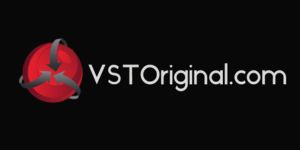TECHNOLOGY
Soaper TV: Behind the Scenes of Soap Making

Soaper TV is one of those everyday necessities that often goes unnoticed, but some find beauty in its creation—soap enthusiasts, also known as “Soaper TV.” At the heart of this passion is the art and science of soap making, a process both fascinating and intricate. This article takes you behind the curtain of soap making, offering an insider’s look at the methods, materials, and mysteries of crafting soap.
A Brief History of Soap
Soap making is an ancient art that dates back thousands of years. The earliest evidence of soap-like materials dates back to around 2800 BC in ancient Babylon. Archaeologists have found clay cylinders with inscriptions indicating they used fats boiled with ashes—a rudimentary soap.
Throughout history, soap recipes have evolved. The Egyptians, Greeks, and Romans all contributed to the development of soap. During the Roman Empire, soap was predominantly used for medicinal purposes rather than hygiene. By the Middle Ages, soap making became a popular craft across Europe, leading to its widespread use for personal cleanliness.
Today, the tradition of soap making continues with both large-scale manufacturers and small artisans creating a wide variety of soaps for different needs and preferences. The art of soap making has modernized, but its roots in ancient techniques remain strong.
Ingredients of a Soap Opera
The beauty of soap making lies in its simplicity. At its core, soap is made from three basic ingredients—fats or oils, water, and lye (sodium hydroxide). These components undergo a chemical reaction called saponification, resulting in soap and glycerin.
The choice of fats and oils greatly influences the soap’s properties. Commonly used oils include olive oil, coconut oil, palm oil, and shea butter. Each oil brings unique qualities to the finished soap, such as lather, moisturizing ability, and hardness.
In addition to these primary ingredients, soap makers often add fragrances, essential oils, colorants, and exfoliants to enhance their products. These additives can transform a simple bar of soap into a luxurious experience, appealing to the senses and caring for the skin.
The Science of Saponification
Saponification is the magical moment in soap making when oils and lye combine to form soap. This process involves a chemical reaction where triglycerides in fats and oils are broken down by the alkali (lye) into fatty acid salts (soap) and glycerol (glycerin).
The science behind saponification is fascinating. When mixing, the solution heats up and thickens, which is a sign that saponification is occurring. This exothermic reaction requires careful measurement and control of temperature and ingredients to ensure a successful batch of soap.
Once the saponification process is complete, the soap must cure. Curing allows the soap to harden, ensuring it lasts longer and provides a rich lather. Typically, soap is left to cure for 4-6 weeks, during which excess water evaporates, resulting in a harder and milder bar.
Safety First in Soap Making
Making soap, while rewarding, requires strict adherence to safety protocols, especially when handling lye. Lye is a caustic substance that can cause burns if not handled properly. Soap makers must wear protective gear, including gloves, goggles, and long sleeves, during the soap-making process.
Accurate measurements are crucial to ensure that all the lye is completely reacted with the oils. This precision prevents any harshness in the final product. Proper ventilation is also essential when working with lye to avoid inhaling fumes.
Despite the risks, many soap makers find the process therapeutic and fulfilling. With the right precautions, soaping can become a safe and enjoyable hobby or business.
The Art of Creativity in Soap Design
One of the most alluring aspects of soap making is the opportunity for creativity. Soap makers can express themselves through colors, shapes, and textures. The possibilities are endless, from swirling patterns resembling marbled paper to embedding botanicals for added elegance.
Techniques like layering, swirling, and stamping allow soap makers to craft visually stunning bars. The addition of natural colorants, such as clays and herbal powders, further enhances the aesthetic appeal of handmade soap.
Artisan soap makers often draw inspiration from nature, fashion, or personal experiences. This creativity transforms each bar of soap into a unique piece of art, making every wash an experience rather than just a routine.
Natural vs. Synthetic Ingredients
When it comes to soap making, there’s often a debate between using natural versus synthetic ingredients. Natural ingredients, such as essential oils and botanical extracts, offer a more organic experience for consumers seeking eco-friendly products.
Synthetic fragrances and colorants, on the other hand, provide consistency and a broader range of scents and colors. While some prefer the reliability of synthetic ingredients, others choose natural components for their health and environmental benefits.
For many soap makers, the choice between natural and synthetic ingredients depends on personal preference, target market, and brand values. Ultimately, both approaches can result in high-quality products that meet customer needs.
Sustainable Soap Making Practices
In recent years, sustainability has become a key consideration in soap making. Consumers increasingly seek products that are not only effective but also environmentally friendly. This shift has led many soap makers to adopt sustainable practices in their production processes.
Sustainable soap making involves sourcing ethically produced oils and ingredients, reducing water usage, and minimizing packaging waste. Some artisans go a step further by using recycled or biodegradable materials for packaging.
By focusing on sustainability, soap makers not only benefit the environment but also appeal to a growing segment of eco-conscious consumers. This commitment to sustainability can set a brand apart in a competitive market.
The Business of Soap Making
For many, soap making begins as a hobby but can quickly turn into a successful business venture. The growing demand for handmade and artisanal products presents an opportunity for soaper tv artisans to establish niche markets.
Starting a soap business involves more than just crafting the product. Entrepreneurs must consider branding, marketing, pricing, and distribution. Building a strong online presence and engaging with customers through social media are crucial for success.
Soap makers can also leverage local markets and craft shows to reach their audience. By providing high-quality products and excellent customer service, entrepreneurs can carve out a loyal customer base in the soap industry.
Soap Making Communities and Collaboration
The global community of soap makers is vibrant and supportive. Online forums, social media groups, and local meetups provide platforms for sharing knowledge, tips, and inspiration. These communities foster collaboration and creativity, enriching the soap-making experience for all.
Participating in workshops and conferences allows soap makers to learn from industry experts and stay updated on trends. Collaborating with other artisans can lead to innovative products and new business opportunities.
For Soaper TV, being part of a community means more than just sharing expertise—it’s about building friendships and celebrating a shared passion for the craft.
Challenges in Soap Making
While soap making is rewarding, it is not without challenges. Beginners may struggle with achieving the right consistency or dealing with unexpected results. Even experienced soap makers encounter occasional setbacks.
Mastering the art of soap making requires patience and practice. Troubleshooting common issues, such as lye-heavy batches or insufficient lather, helps soap makers refine their skills. Learning from mistakes and seeking guidance from more experienced artisans can accelerate progress.
Despite the hurdles, the process of overcoming challenges contributes to the satisfaction and joy of soap making. With dedication and persistence, soap makers can create products that bring delight to others.
The Future of Soap Making
The future of soap making is bright, with innovation and creativity driving the industry forward. Advancements in technology, sustainable practices, and consumer preferences continue to shape the landscape of soap making.
Emerging trends, such as zero-waste packaging, digital marketing, and personalized soap formulations, are likely to influence the direction of the craft. Soap makers who adapt to these changes will thrive in an evolving market.
By staying informed and open to experimentation, soap makers can ensure their place in the vibrant world of soap making, creating products that continue to captivate and inspire.
Conclusion
Soaper TV making is an intricate blend of art, science, and passion. From selecting the finest ingredients to crafting visually stunning designs, every step of the process reflects the dedication of Soaper TV to their craft.
Whether you’re a seasoned artisan or just starting your soap-making journey, the world of soap offers endless possibilities. By understanding the nuances of the craft and connecting with like-minded individuals, you can create beautiful, high-quality products that enrich the lives of others.
Remember, the magic of soap making lies not only in the bars you produce but also in the joy and satisfaction it brings to you and your customers. Happy soaping!
TECHNOLOGY
Amikaf16: The Future of Modern Technology in Daily Life

Technology has become an indispensable part of how we live, work, and connect. From mobile banking to smart homes, every passing generation of innovation seems to amplify the convenience and efficiency of our daily lives. Enter Amikaf16—a modern marvel poised to redefine how we interact with technology forever.
What makes Amikaf16 so special? In this blog, we’ll explore what sets it apart and discuss its revolutionary potential across various aspects of daily life, such as communication, healthcare, education, and home automation.
If you’re curious about how a single advancement could seamlessly integrate into every facet of your day-to-day routines, read on.
What is Amikaf16?
Amikaf16 is not just another piece of software or hardware. It’s a multifunctional platform powered by advanced AI (Artificial Intelligence) and IoT (Internet of Things) technologies, designed to serve as a centralized hub for personal and professional life management.
With its state-of-the-art intelligence, Amikaf16 not only adapts to your individual habits but also uses predictive analytics to anticipate your needs before you even realize them. Its applications range from managing your digital communication to automating your home appliances—all with unparalleled efficiency.
But its promise doesn’t stop there. Amikaf16 is wired for scalability, meaning its capabilities will evolve with new updates, ensuring that it remains a cutting-edge solution as times change.
Why Does Amikaf16 Matter?
Today’s technological landscape is disparate—separate devices to handle separate needs. But Amikaf16 serves as the unifying layer that connects all these fragments, creating a more cohesive and seamless operation. Imagine a world where your smartwatch, smartphone, thermostat, fridge, and even your health records communicate perfectly with one another.
The result? Effortless control, boundless connectivity, and significant time savings. Let’s dive into its impact on key aspects of life.
How Amikaf16 Will Transform Key Areas of Your Life
1. Intelligent Communication
Communication tools often feel cluttered—between emails, texts, and video chats, things can get overwhelming. Amikaf16 promises to declutter this process by acting as a personal assistant for all communication channels.
- Centralized Messaging: Instead of toggling between apps (WhatsApp, email, SMS), Amikaf16 consolidates messages into one space.
- AI-Powered Responses: It learns your communication style, offering accurate, on-brand suggestions for replies, saving you time and reducing errors.
- Voice and Gesture Commands: Forget typing. Using simple voice or gesture commands, you can seamlessly take calls, check missed messages, or draft emails.
2. Revolutionizing Healthcare
Amikaf16 will move beyond wearable health trackers by integrating with hospitals and pharmacies to act as your personal health concierge.
- Health Monitoring: Using connected IoT devices, Amikaf16 tracks your vitals, offering comprehensive reports on heart rate, blood sugar, and more.
- Doctor Appointments: Need a check-up? Its smart scheduling feature suggests the best times based on your calendar and confirms appointments with healthcare providers.
- Medication Reminders: Never forget another pill—Amikaf16 uses gentle prompts and stores an up-to-date prescription record accessible anytime.
3. Smarter Learning and Education
For students and lifelong learners alike, Amikaf16 offers personalized learning pathways tailored to how individuals retain information best.
- AI-Driven Tutors: Struggling with algebra? The AI can break concepts down into digestible, interactive lessons.
- Global Classroom Access: Join live lectures or workshops from top universities with a single voice command.
- Time Management: From assignment deadlines to exam prep, Amikaf16 structures your schedule to maximize productivity.
4. Automation in Home Life
Imagine waking up to freshly brewed coffee, with the temperature adjusted to your liking and soft music playing in the background. With Amikaf16, this isn’t just a dream.
- Home Automation: Control your lights, thermostat, curtains, and TVs all from one interface.
- Energy Efficiency: By learning your preferences, Amikaf16 optimizes energy usage, reducing your bills and your carbon footprint.
- Groceries on Autopilot: Running low on milk? Amikaf16 syncs with your smart fridge and places orders for you.
5. Personalized Marketing and Shopping
Tired of poorly targeted ads? Amikaf16 curates suggestions based on your actual needs and preferences.
- Tailored Recommendations: It analyzes your recent searches and purchases, ensuring highly relevant suggestions.
- Effortless Checkouts: Integrated with major retailers, Amikaf16 automates checkouts and tracks your shipment progress in real-time.
Amikaf16 and Privacy Concerns
A question that comes to mind for many users is, “How secure is my data?”
Amikaf16 prioritizes user privacy with end-to-end encryption across all its connections. Furthermore, you have full control over what data the platform collects and stores, ensuring transparency every step of the way.
Advanced biometric verification ensures that only authorized users can access sensitive features like healthcare updates or financial transactions.
What Makes Amikaf16 Stand Out?
Unlike other AI solutions that focus on singular applications, Amikaf16 is an all-encompassing innovation, integrating AI, IoT, and user-specific personalization into one sleek package. Here’s why it leads the pack:
- Intuitive Interface: Even technology novices can use Amikaf16, thanks to its user-friendly design.
- Limitless Integration Potential: Compatible with most brands and devices, ensuring smooth adoption.
- Adaptive Learning: Grows with your lifestyle and preferences, continually improving over time.
How Enterprises Are Leveraging Amikaf16
While individuals benefit from Amikaf16, enterprises are also taking full advantage of its functionalities. From streamlining supply chains to powering customer service chatbots, businesses use Amikaf16 to boost efficiency and gain competitive advantages.
With its multi-user support and unmatched scalability, Amikaf16 is setting the gold standard for AI-driven business innovations.
How to Get Started with Amikaf16
Are you ready to experience technology’s next big leap? The future is here, and it’s wrapped in the convenience and innovation of Amikaf16.
Getting started is simple. Install the Amikaf16 starter app, customize your dashboard, and join a community of forward-thinkers already harnessing the power of this breakthrough technology.
The age of connected living and intelligent systems isn’t the future—it’s here now, and Amikaf16 is leading the charge.
TECHNOLOGY
How Risk Adjustment Vendors Support Seamless Integration of Concurrent Coding and Prospective Risk Adjustment

The evolving demands of healthcare documentation and reimbursement often leave organizations grappling with how to align real-time data capture with forward-looking planning. For many, combining concurrent coding with prospective risk adjustment offers the dual benefit of ensuring accurate, immediate documentation and proactive care planning. However, achieving this integration is not without its challenges. This is where risk adjustment vendors step in as critical partners, offering the tools, training, and expertise needed to create cohesive workflows that drive both clinical and financial success.
Challenges of Integrating Concurrent Coding and Prospective Risk Adjustment
Healthcare providers face several obstacles when attempting to merge concurrent coding and prospective risk adjustment:
- Fragmented Workflows: Real-time documentation and predictive planning often function as separate processes, leading to inefficiencies and missed opportunities for optimization.
- Technological Disparities: Legacy systems and disjointed electronic health record (EHR) platforms make data integration difficult.
- Staff Adaptation: Clinicians and coders may struggle to adapt to new tools and workflows, especially when balancing documentation with patient care.
- Compliance Risks: Misaligned processes increase the risk of regulatory non-compliance, resulting in potential audits and financial penalties.
Risk adjustment vendors are uniquely positioned to address these challenges, enabling organizations to fully leverage the synergy between concurrent coding and prospective risk adjustment.
How Risk Adjustment Vendors Facilitate Integration
Risk adjustment vendors play a pivotal role in bridging the gap between real-time documentation and predictive planning. Here’s how they support seamless integration:
- Unified Technology Solutions
Vendors provide platforms that bring concurrent coding and prospective risk adjustment under one umbrella. These systems integrate seamlessly with existing EHRs, ensuring a unified workflow that minimizes manual effort and maximizes accuracy. By combining real-time coding with predictive analytics, these tools create a comprehensive view of patient data, enabling organizations to capture every relevant diagnosis and treatment.
- Tailored Training and Support
Successful integration requires more than just technology—it demands a workforce equipped to use it effectively. Risk adjustment vendors offer tailored training programs for both clinicians and coders, helping teams understand how to document in real time while leveraging predictive insights. Hands-on support ensures a smooth transition and fosters confidence in new workflows.
- Workflow Optimization
Vendors analyze existing documentation processes to identify inefficiencies and bottlenecks. They provide data-driven solutions that streamline workflows, ensuring that concurrent coding and prospective risk adjustment complement each other without redundancy. This holistic approach reduces administrative burden while enhancing overall productivity.
- Compliance Assurance
With ever-changing regulations, staying compliant is a top priority for healthcare organizations. Vendors ensure that integrated workflows align with regulatory standards, reducing the risk of audits and penalties. Their expertise in risk adjustment coding ensures documentation accuracy, protecting organizations from potential compliance pitfalls.
The Benefits of Partnering with Risk Adjustment Vendors
Integrating concurrent coding with prospective risk adjustment offers significant advantages, and partnering with vendors amplifies these benefits:
Improved Accuracy
Vendors equip organizations with tools that enhance the precision of documentation and coding. Predictive analytics flag potential gaps or inconsistencies in real time, ensuring that no detail is overlooked. This level of accuracy is critical for generating accurate risk scores and maximizing reimbursements.
Enhanced Efficiency
Streamlined workflows save time and reduce the administrative burden on healthcare teams. By automating routine tasks and eliminating redundancies, vendors enable clinicians and coders to focus on higher-value activities, such as patient care and complex documentation.
Optimized Financial Outcomes
Accurate and comprehensive documentation directly impacts reimbursements. With vendor support, organizations can ensure they capture all reimbursable services and align risk scores with patient complexity. This not only improves cash flow but also provides financial stability in an increasingly value-driven healthcare environment.
Better Patient Outcomes
Real-time and proactive documentation enhances care coordination, enabling clinicians to make informed decisions based on comprehensive data. This dual approach leads to more personalized care plans, better management of chronic conditions, and improved overall patient outcomes.
Overcoming Integration Challenges with Vendor Support
Despite the clear benefits, integrating concurrent coding with prospective risk adjustment can present challenges. Risk adjustment vendors offer targeted solutions to address these obstacles:
- Technology Compatibility
Integrating new tools with existing systems can be daunting. Vendors specialize in creating platforms that work seamlessly with current EHRs and other documentation systems, ensuring a smooth implementation process.
- Staff Adaptation
Adapting to new workflows can be challenging for healthcare teams already stretched thin. Vendors provide robust training programs and ongoing support to help staff build confidence and proficiency in integrated processes.
- Cost Constraints
Budget limitations are a common concern, especially for smaller organizations. Vendors offer scalable, cost-effective solutions tailored to organizational needs, ensuring a high return on investment without overextending resources.
Actionable Steps for Leveraging Vendor Support
To successfully integrate concurrent coding and prospective risk adjustment, healthcare organizations should take the following steps:
- Evaluate Current Processes
Conduct a comprehensive assessment of existing workflows to identify inefficiencies and gaps. This will help determine where vendor support can have the greatest impact.
- Choose the Right Vendor
Select a vendor with a proven track record in integrating concurrent coding and prospective risk adjustment. Look for partners who offer customizable tools, industry expertise, and a commitment to long-term support.
- Implement Tools and Training
Collaborate with your chosen vendor to deploy integrated technology solutions and provide targeted training for your team. Ensure that both clinicians and coders understand how to use the tools effectively.
- Monitor and Optimize
Use analytics to track the performance of integrated workflows. Regularly review metrics such as documentation accuracy, reimbursement rates, and compliance outcomes to identify areas for improvement and refine processes accordingly.
Conclusion
Healthcare organizations face mounting pressure to deliver accurate documentation while optimizing financial and patient outcomes. The integration of concurrent coding and prospective risk adjustment offers a powerful solution to these challenges, but successful implementation requires the right tools, training, and support.
Risk adjustment vendors play an essential role in facilitating this integration, providing the expertise and resources needed to create seamless workflows that enhance accuracy, efficiency, and compliance. By partnering with a trusted vendor, healthcare organizations can confidently navigate the complexities of modern documentation and unlock the full potential of these complementary strategies.
In today’s evolving healthcare landscape, embracing the dual approach of concurrent coding and prospective risk adjustment is not just a step toward better documentation—it’s a strategic move toward sustainable success.
TECHNOLOGY
Homelite UV80522 Drain Plug Location and Its Importance

Imagine the efficiency of your Homelite UV80522 Drain Plug Location pressure washer, the steady hum as it blasts through grime and dirt, making everything in its wake spotless. Now, imagine that same machine falling short of expectations, simply because of a small yet vital component—the drain plug.
This unassuming part plays a crucial role in your pressure washer’s maintenance and longevity. But where exactly is the drain plug located on your Homelite UV80522, and why is it so important? Let’s explore this integral feature, its purpose, and why knowing its location could save you significant cost and effort.
Why the Homelite UV80522 Drain Plug Location Matters
Every machine has its unsung hero, and for pressure washers, the Homelite UV80522 Drain Plug Location is one of them. It serves as the gateway for draining old oil, ensuring your equipment runs smoothly and efficiently. Oil degrades over time, collecting debris and becoming less effective. Proper oil drainage allows fresh oil to enhance the functionality of your pressure washer while preventing costly damage.
Neglecting this simple step can lead to long-term consequences such as engine wear, overheating, and even permanent mechanical failure. Evidently, this small plug holds the weight of your machine’s performance and longevity squarely on its proverbial shoulders.
Locating the Drain Plug on the Homelite UV80522
Finding the drain plug on the Homelite UV80522 isn’t as complicated as it may initially seem. Picture bending over the pressure washer, eyes scanning its intricate components. Your hands gently maneuver the machine to get a better look—it’s almost like discovering a treasure hidden beneath a map of metal components.
Step 1: Identify the Model
First, double-check that your pressure washer is indeed the Homelite UV80522. The model information is usually printed on a sticker near the engine or the frame. This ensures the steps that follow align with your specific machine.
Step 2: Position the Pressure Washer
Place the pressure washer on a flat, stable surface to avoid spills and potential accidents. Tip it slightly backward, just enough to reveal the underside of the pump. This is where the magic begins.
Step 3: Look for the Drain Plug
The drain plug on the Homelite UV80522 is located near the oil tank and underneath the machine. It’s usually a small, hexagonal bolt that blends effortlessly into the design of the washer. While its inconspicuous nature might make it tricky to spot initially, a flashlight can come in handy to illuminate its placement.
Step 4: Confirm the Seal
Once you’ve located the drain plug, check for a tight seal. The plug should sit firmly in place to prevent any leaks during operation but should also be easy enough to unscrew with a wrench when it’s time for an oil change.
Now that you’ve unlocked the secret of the location, it’s time to understand the steps for effective use of this little wonder.
How to Use the Drain Plug for Maximum Efficiency
Step 1: Gather Essential Tools
Before you begin, ensure you have a wrench, an oil collection pan, and replacement oil recommended in your user manual. Taking a few minutes to gather these tools will set you up for a seamless process.
Step 2: Drain Old Oil
Carefully unscrew the drain plug using your wrench, allowing the used oil to flow into the collection pan. Picture amber drops falling steadily, signaling the end of your engine’s previous oil cycle. This simple act is like a therapeutic reset for your pressure washer.
Step 3: Seal and Refill
Once the old oil is completely drained, replace the plug securely to prevent leaks. Then, add fresh oil, ensuring you don’t overfill. Turn the machine on for a few seconds to allow the new oil to circulate fully.
The Lifesaving Benefits of Regular Maintenance
Like a fine-tuned symphony, your Homelite pressure washer performs at its best when every part, no matter how small, is in perfect harmony. Regular oil changes via the drain plug have an array of benefits, such as:
- Enhanced Performance: A well-oiled engine works harder and lasts longer.
- Extended Lifespan: Routine maintenance reduces wear and tear, ensuring years of reliable service.
- Cost Savings: Preventative care is always more affordable than costly repairs or full replacements.
By incorporating this practice into your maintenance routine, you’re safeguarding the longevity and efficiency of your pressure washer for the long haul.
Troubleshooting Common Drain Plug Issues
Even the most reliable components can pose challenges. But fret not—each problem has a practical solution.
- Issue 1: The plug is stuck.
- Solution: Apply a penetrating oil to loosen it, or use a specially designed drain plug removal tool.
- Issue 2: The plug is leaking oil.
- Solution: Check that it is tightened properly. Replace the washer seal if necessary.
- Issue 3: Oil won’t drain completely.
- Solution: Slightly tilt the pressure washer forward to assist in full drainage.
Understanding and resolving these issues can minimize downtime, keeping your Homelite UV80522 in peak condition.
Why Trust the Homelite UV80522?
From blasting stubborn dirt off driveways to preparing surfaces for a fresh coat of paint, the Homelite UV80522 is an unrivaled cleaning companion. Its thoughtfully designed components, such as the drain plug, exemplify the machine’s commitment to delivering superior performance while making maintenance convenient.
Owning this tool means you’re not just investing in clean driveways and outdoor spaces—you’re investing in a piece of equipment that has your back in the long run.
Keep Your Pressure Washer in Prime Condition
Congratulations! You’ve now uncovered the vital role of the Homelite UV80522’s drain plug. By knowing its exact location and understanding how to use and maintain it, you’re well on your way to getting the most out of your pressure washer.
Regular maintenance ensures that every blast of water it delivers is powerful and reliable, speaking volumes about your commitment to quality and care.
For more tips, tricks, and tools to help maintain your equipment, stay tuned to our blog. If you still have questions about maintaining your Homelite UV80522, feel free to reach out. We’d love to help keep your machine working like new for years to come.
-

 TECHNOLOGY10 months ago
TECHNOLOGY10 months agoTronics 0RUL1108 Bluetooth: The Future of Wireless Technology
-

 TECHNOLOGY10 months ago
TECHNOLOGY10 months agoBE78N-S7J-E Unveiled: A Deep Dive into Its Features and Benefits
-

 TECHNOLOGY10 months ago
TECHNOLOGY10 months agoTop 10 Must-See Posts from v3rb1son.tumblr You Can’t Miss!
-

 TECHNOLOGY11 months ago
TECHNOLOGY11 months agoThe Benefits of a High-Speed Broadband Internet Connection for Home and Business
-

 TOPIC11 months ago
TOPIC11 months agoThe Story Behind 1-617-693-7201: A Comprehensive Analysis
-

 TOPIC11 months ago
TOPIC11 months agoEU-NENCFZS8 Explained: What You Need to Know for 2024
-

 TECHNOLOGY12 months ago
TECHNOLOGY12 months agoHow Harwalk Info Labs is Revolutionizing the Tech Industry
-

 TECHNOLOGY11 months ago
TECHNOLOGY11 months agoThe Future of Gaming Unveiled at DashGameFest 2023
